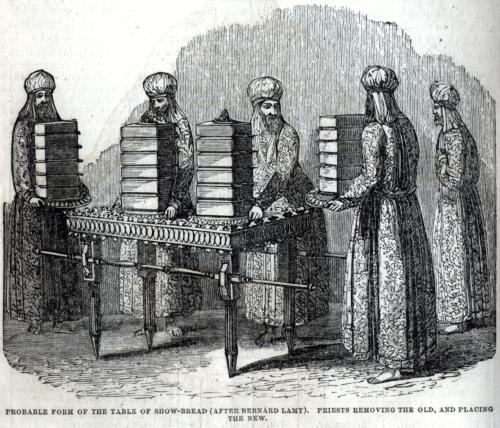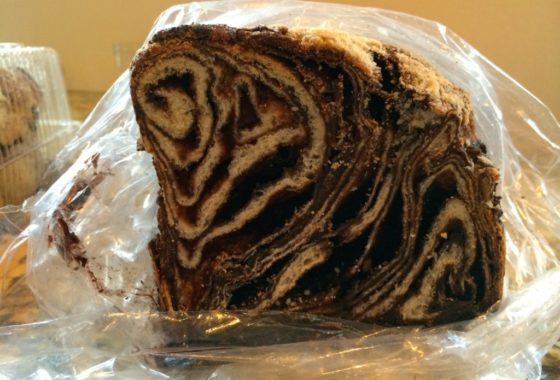
Digging into Biblical Breads
Jewish breads transport us to ancient times. Major Jewish ideas about humanity and the Jewish people hinge on biblical bread stories. They define humanity and the Jewish people through bread. The first appears at the beginning of the Bible with the expulsion of Adam and Eve from the Garden of Eden. When they leave the innocence of paradise, God announces: “By the sweat of your brow shall you get bread to eat.” From then on, in the biblical view, the challenge of getting bread marks the lives of humans.
Later, the book of Exodus recounts Joseph’s success in Egypt through themes of grain, lack of grain, and storage of grain. The Jewish “starter” story traces salvation from slavery to freedom through matzah which is, perhaps, the oldest type of bread in continuous Jewish consumption. Bread was formative: for Adam and Eve transitioning from Eden into human experience as we know it; and, for the Hebrews from Egypt forming into the Jewish people. Today, we still enjoy breads at life transitions and celebrations.
Breads were also essential to daily diets and to sacred occasions. The Bible mentions the Hebrew word for bread, lechem, approximately 300 times. The word signifies food or, more broadly a meal, like when in English we say dough and mean currency for purchasing food. The Bible mentions several techniques, types, shapes, and names of breads. In those days, many meals consist of the simple triad of olives (oil), grapes (wine), and grain (bread). Grains provide significant daily nutrition, about 50 to 70% of a day’s caloric intake.
Some breads uniquely appear at holy times in the sacred sanctuaries of the ancient Tabernacle and in the later Jerusalem Temples, some leavened and some not. Breads also represent abundance and fertility. Kneading bowls for bread making symbolize God’s providence. The Bible privileges two grains in particular, wheat and barley, listing them among the iconic seven species, Shivat Ha Minim, the honored biblical menu of foods that grow in the Land of Israel.
Biblical women in particular derived social power and status from their responsibility for bread, according to scholar Carol Meyers. She writes: “Women’s shared bread preparation activities served an important social function in ancient Israel by contributing to the well-being and survival of their communities as well as their families.” Women in biblical times networked with each other, often spending two or three hours daily working communal hand mills and ovens just to provide enough flour and bread for a grain-dependent family of six. That’s a lot of labor.
Biblical breads–with their variety, their uses, and their antiquity–begin our Jewish bread trail.
Recent Posts
-
Sweet Treat: Chocolate and the Making of American Jews
You may wonder: how did chocolate help define American Jews? Through chocolate, we see that Jews were part of America since its earliest days. Well, since 1701 at least, Jews in the Colonies made part of their living through chocolate. Several Sephardim, leaders of their New York and Newport Jewish and secular communities, participated in
Read more › -
How About Some Uterus Challah?
When Logan Zinman Gerber felt enraged about the loss of reproductive rights in the U.S., she baked challah. Not any challah. She shaped it into a uterus. It wasn’t long after the birth of her daughter that Gerber, a longtime challah baker and staff member of the Religious Action Center of the Reform movement, considered
Read more › -
A Manhattan synagogue explores the rich, surprising history of Jews and chocolate
I’m grateful for this story written by Rachel Ringer, published at JTA/NY Jewish Week on December 20, 2023: (New York Jewish Week) — In 2006, Rabbi Deborah Prinz was on a trip to Europe with her husband, Rabbi Mark Hurvitz, when they wandered into a chocolate shop in Paris. While meandering about the store, Prinz picked
Read more › -
Exhibit Opens! Sweet Treat! Chocolate & the Making of American Jews
Sweet Treat is a delicious gastronomic adventure into the history and resilience of American Jewish chocolate making. This exhibition invites you to follow the chocolate trail to America, a scrumptious journey through time and place. Chocolate gives us a lens to understand Jewish migration, as the chocolate trade parallels the migrations of the Jewish
Read more ›
Some Previous Posts
(in alphabetical order)
- "Boston Chocolate Party" Q&As with Deborah Kalb
- 2022 Media for The "Boston Chocolate Party"
- About Rabbi Deborah Prinz
- Baking Prayers into High Holiday Breads
- Boston Chocolate Party
- Chocolate Chip Politics
- Digging into Biblical Breads
- For the Easiest Hanukah Doughnuts Ever
- Forthcoming! On the Bread Trail
- Funny Faced Purim Pastries
- Good Riddance Chameitz or, The Polemics of Passover's Leaven
- Injera*
- Israeli Chocolate Spread
- Jewish Heritage Month: Baseball & Chocolate!
- Matzah - But, the Dough Did Rise!
- Plan a Choco-Hanukkah Party: 250th Anniversary Tea Party
- Prayers Into Breads
- To Shape Dough: A Trio of Techniques
- Why Is Challah On My Matzah Box?



